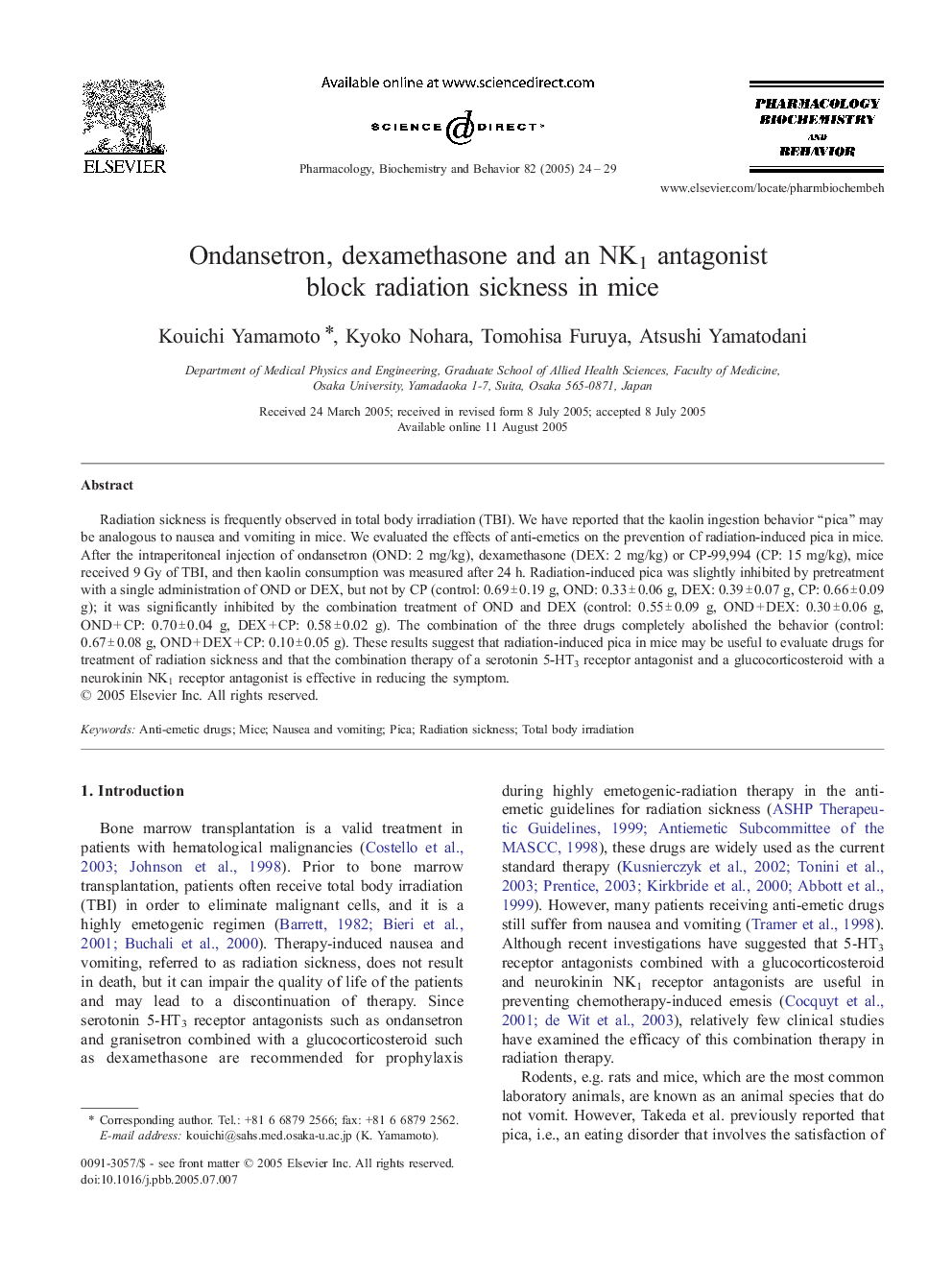| Article ID | Journal | Published Year | Pages | File Type |
|---|---|---|---|---|
| 10838357 | Pharmacology Biochemistry and Behavior | 2005 | 6 Pages |
Abstract
Radiation sickness is frequently observed in total body irradiation (TBI). We have reported that the kaolin ingestion behavior “pica” may be analogous to nausea and vomiting in mice. We evaluated the effects of anti-emetics on the prevention of radiation-induced pica in mice. After the intraperitoneal injection of ondansetron (OND: 2 mg/kg), dexamethasone (DEX: 2 mg/kg) or CP-99,994 (CP: 15 mg/kg), mice received 9 Gy of TBI, and then kaolin consumption was measured after 24 h. Radiation-induced pica was slightly inhibited by pretreatment with a single administration of OND or DEX, but not by CP (control: 0.69 ± 0.19 g, OND: 0.33 ± 0.06 g, DEX: 0.39 ± 0.07 g, CP: 0.66 ± 0.09 g); it was significantly inhibited by the combination treatment of OND and DEX (control: 0.55 ± 0.09 g, OND + DEX: 0.30 ± 0.06 g, OND + CP: 0.70 ± 0.04 g, DEX + CP: 0.58 ± 0.02 g). The combination of the three drugs completely abolished the behavior (control: 0.67 ± 0.08 g, OND + DEX + CP: 0.10 ± 0.05 g). These results suggest that radiation-induced pica in mice may be useful to evaluate drugs for treatment of radiation sickness and that the combination therapy of a serotonin 5-HT3 receptor antagonist and a glucocorticosteroid with a neurokinin NK1 receptor antagonist is effective in reducing the symptom.
Related Topics
Life Sciences
Biochemistry, Genetics and Molecular Biology
Biochemistry
Authors
Kouichi Yamamoto, Kyoko Nohara, Tomohisa Furuya, Atsushi Yamatodani,
